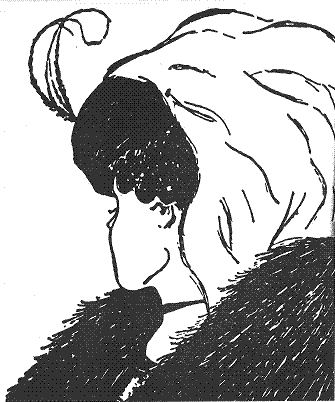There are three primary disciplines that other Stoic practices flow from. Perception. Action. Will.
Perception: Seeing clearly, without letting emotions cloud your judgement.
Action: Take action on those things that are right.
Will: Accept willingly the things I cannot control or change.
Let’s look first at perception, since what we perceive shapes everything.
At the beginning of his handbook, the Enchiridion, Epictetus outlines the essential principle:
Train yourself without hesitation to say in response to every harsh appearance that “you are merely an appearance and in no way, the thing appearing.”
It’s a straightforward but powerful idea.
It is not things themselves that upset us but our judgements about these things.
The idea isn’t exclusive to Stoicism, although it may have influenced others. Or perhaps the concept is quite self-evident, so it’s no surprise that plenty of people discover it for themselves.
Between stimulus and response there is a space. In that space is our power to choose our response. In our response lies our growth and our freedom Viktor Frankl
It has been expressed throughout the ages in various ways, but they all boil down to the same concept.
”We can complain because rose bushes have thorns or rejoice because thorn bushes have roses” Oscar Wilde
In other words, events and things are neither good or bad (they are indifferent). It is your judgement that decides whether it was good or bad. Often this choice is automatic, through our conditioning, but as humans, we have the unique capability to shape our reality. And through that, we have the power to change our viewpoint.
Make it part of your character
Training to shift your perspective is a fundamental building block of character. In 7 Habits of Highly Effective People Stephen Covey demonstrates the power of this paradigm shift succinctly using this image.

Look carefully, describe what you see. Do you see a woman? How old is she? What is she wearing?
Do you see a young, stylish woman in her 20s? Dressed to go out on the town? Or, do you see a dour, old woman with a big hook nose, wearing a shawl?
Two people can have different opinions, yet both be correct. If someone else can hold a different, but accurate, point of view from you then it must hold that you can train yourself to see things differently.
Now, I’m not saying it’s easy. It takes time and effort to train and recondition yourself to begin thinking in a new way.
This isn’t merely about positive thinking, but it is about thinking more positively. It is about choosing whether to be offended. To be clear, what I’m not saying (nor is Stoicism) that you ought to stand idly by while others say offensive things. There are other principles and ethics which address that. What we’re talking about here is how we cultivate our ability to view events with equanimity, to remain calm and dispassionate to respond appropriately with reason.
It starts with you saying to yourself in each situation that this thing is not the thing, but merely your impression of it. You can look past it to reveal the truth behind it. It can be a long journey. But many Stoic practices can be used to build this perspective into an automatic response, because, as Ryan Holiday notes in The Obstacle is the Way:
Where the head goes, the body follows. Perception precedes action. Right action follows the right perspective.
Once we’ve begun to view things more clearly, then it’s time to take action.
stoicism
